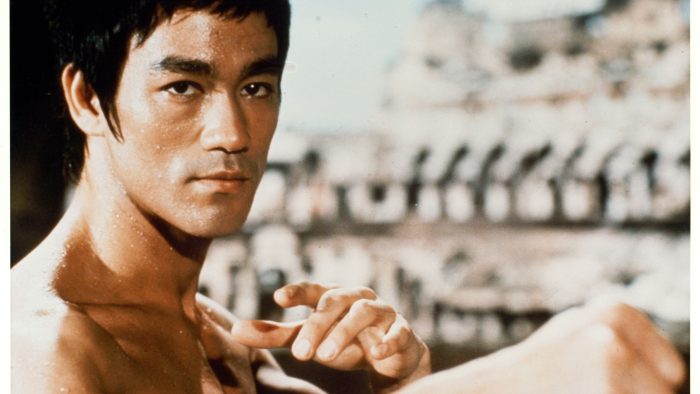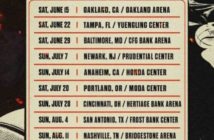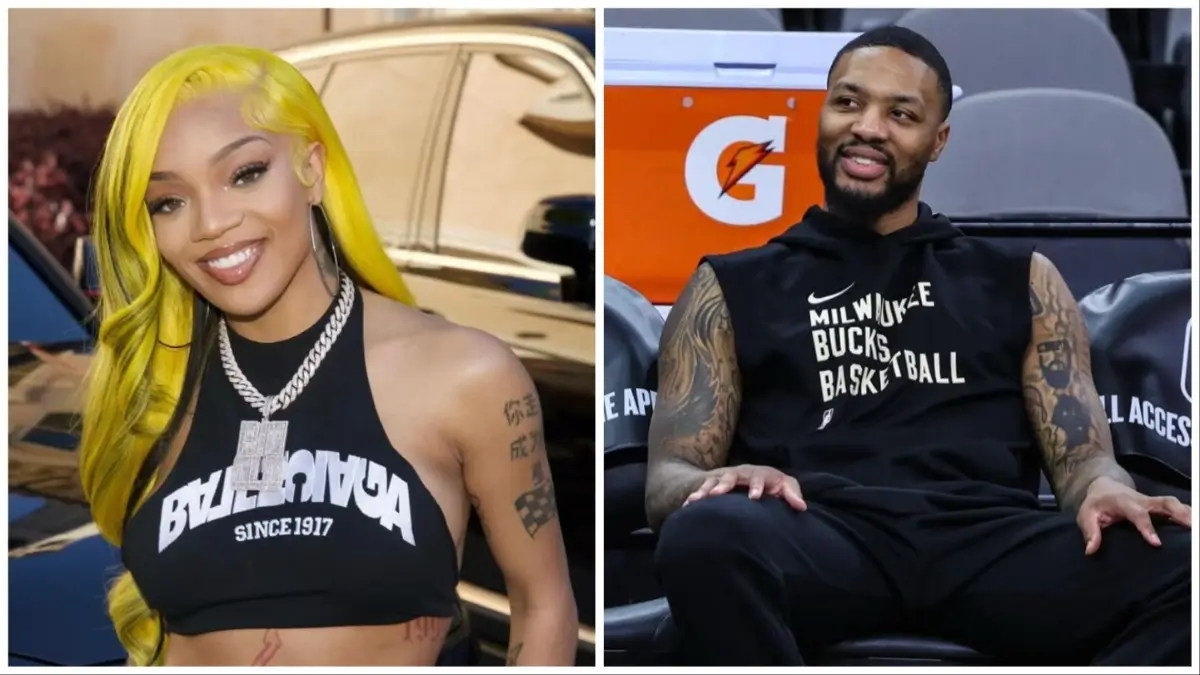Actor Bruce Lee, who died 50 years ago on July 20, 1973, had an indelible impact on the Black community, and in turn, Black fighters influenced his style. The mutually beneficial relationship began before Lee was famous, and at the height of the U.S. civil rights movement.
On March 2, 1967, the two stars of ABC series The Green Hornet, Van Williams and Lee, were guest stars on another ABC series, Batman. In a fight scene that surprised most viewers, the Green Hornet’s sidekick and chauffeur Kato got the best of Batman’s “Dynamic Duo” partner Robin, using the karate that Kato was associated with. Lee portrayed Kato, and when the Chinese fighter kicked the All-American Robin halfway across the room, Black viewers were excited. In his black suit, black beret and black mask, Kato was already becoming a symbol of smooth in Black communities.
We watched Kato to see what he would do next. But “the kick” solidified the fandom, and gave us a moment. A lot of us children reenacted that moment in the streets or playgrounds the next day. “You see Kato kick Robin?” It also helped foster Black interest in East Asian martial arts. In the era of three TV networks, it was the kick seen around the world.
Three weeks after Kato whupped Robin, champion boxer Muhammad Ali defeated Zora Folley in what would be his final fight of the decade. In April 1967, Ali’s heavyweight title was stripped, robbing us young Black boys and girls of a fighting role model. The Green Hornet was canceled after the 1966-67 TV season. Our other fighting superhero, who was Chinese, was gone but not forgotten. We were already hooked. As much as Kato inspired young Black viewers, Black men also had an impact on Lee.
Britt Reid (played by Van Williams, left) portrayed a millionaire newspaper publisher who moonlighted as the crime-fighting masked hero, the Green Hornet, to battle criminals with his sidekick Kato (Bruce Lee, right), a martial arts expert, in the 1966-67 series.
ABC Photo Archives/Disney General Entertainment Content via Getty Images
Lee was sent by his family from Hong Kong to San Francisco, then Seattle when he was 18. He attended Edison Technical School and obtained a high school diploma. In Seattle, Lee met young Black men in classes, at dances and parties in the early 1960s while teaching small martial arts classes.
One day he met an aspiring guitarist named Jimi Hendrix behind Garfield Bowling Lanes. The teen attended Garfield High School, where Lee did martial arts demonstrations. Jesse Glover, Lee’s first student, was Black. Lee showed Glover moves and forms in a class that took place in garage across the street from the restaurant where Lee worked as a busboy for a family named the Chows (in whose home Lee lived). Glover told Lee about the struggles of Black people in the U.S.
This pattern of exchange followed Lee throughout his life. Those around him did not always welcome the interaction. Restaurant owner Ruby Chow, whom Lee’s parents had entrusted with his care, objected to him teaching self-defense to non-Chinese, and particularly Black folks. Chow said, “You’re teaching Negroes this and that — they’re going to beat up Chinese.”
Lee retorted, “They’re going to beat up Chinese anyway. If I teach them, they’re going to have respect for Chinese.”
Related Story
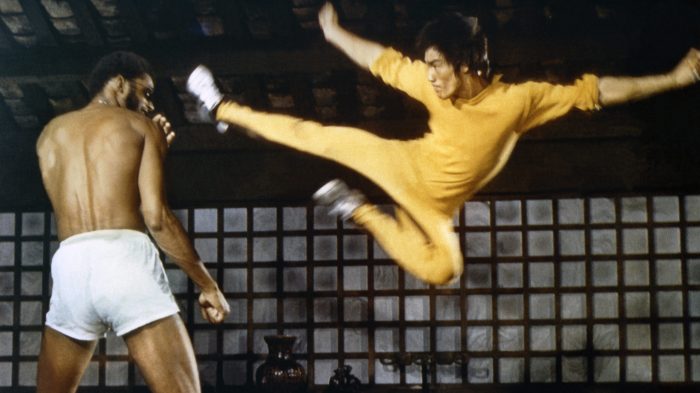 How Bruce Lee combined martial arts with the blaxploitation genreRead now
How Bruce Lee combined martial arts with the blaxploitation genreRead now
In 1961, he enrolled at the University of Washington, majoring in philosophy. In 1964, Lee opened a martial arts school in Oakland, California, the Jun Fan Gung Fu Institute. He was 24. In 1966, Lee, now married and a father, moved to the Westwood section of Los Angeles. He began filming episodes as Kato for The Green Hornet. The series paid him only $400 an episode, so Lee continued to teach.
As a young UCLA basketball player, Lew Alcindor (who would change his name to Kareem Abdul-Jabbar in 1971) studied martial arts under Lee. He met Lee through a mutual friend, the editor of Black Belt Magazine. Alcindor and Lee would go to Lee’s study, where Alcindor would tell Lee about the Black fight for freedom and respect. The two had a lot in common.
Lee was a child movie star in Hong Kong; Alcindor was a child star in basketball. One was easily recognized on the streets of New York, the other in Hong Kong. Alcindor’s father was a musician, Lee’s dad was an opera singer and actor. Alcindor attended Holy Providence boarding school, where he was picked on, Lee was the target of bullies because he was a child star, and he was one-quarter European. Bruce went to St. Francis Xavier’s College in Hong Kong, which is mostly white, Kareem attended Power Memorial Academy. Bruce moved to Seattle as a young man, Alcindor went to LA.
Alcindor gave Lee books about Islam. Lee knew Chinese Muslims, some of whom practiced wushu self-defense techniques traditional in Indonesia and Malaysia. Lee encouraged Alcindor to lift weights. From his relationships with Glover and Alcindor, Lee learned a lot about race relations. Lee later cast Alcindor in a movie, Game of Death, which was released in 1979 after Lee’s death.
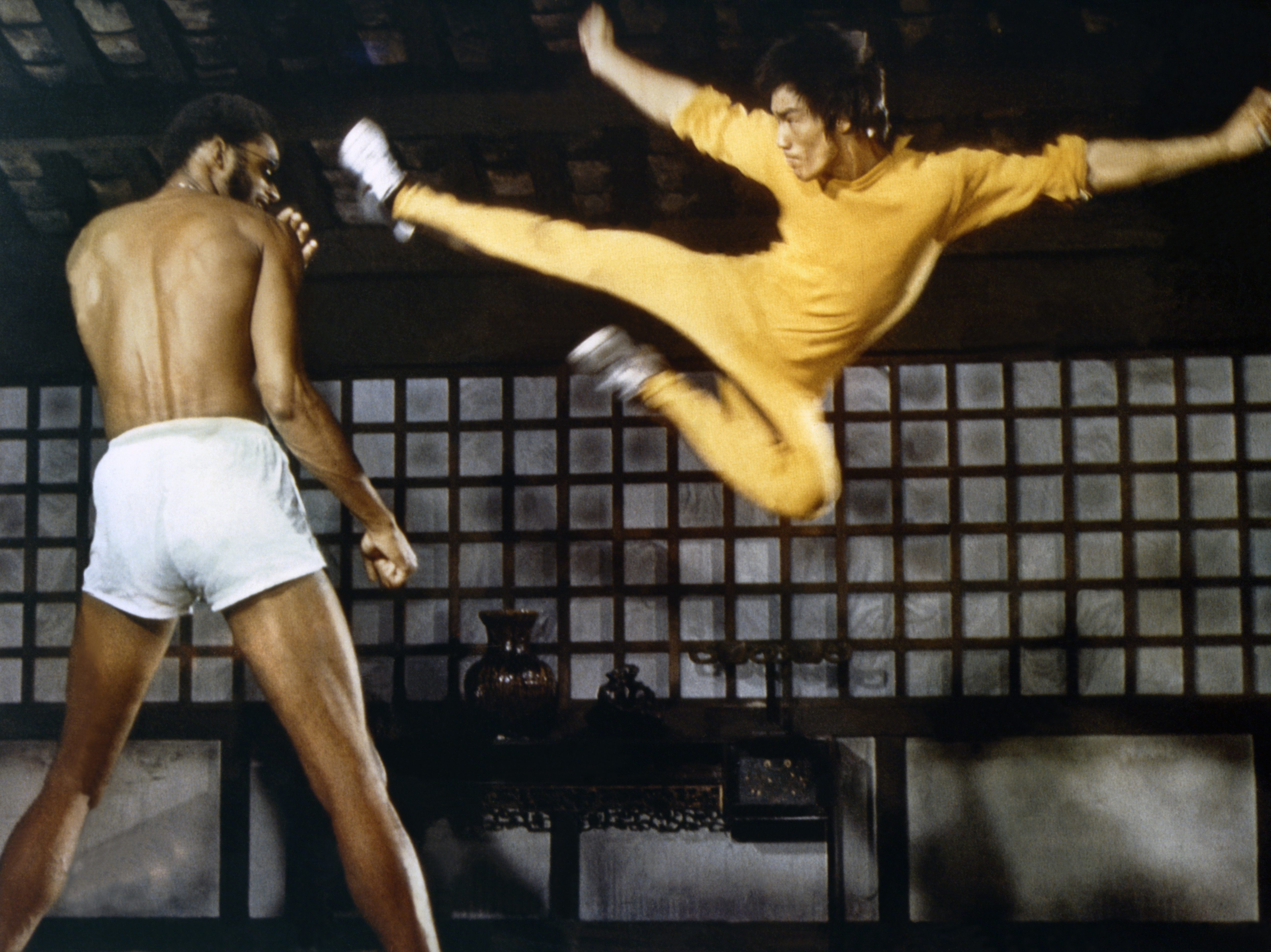 Kareem Abdul-Jabbar (left) and Bruce Lee (right) on the set of Game of Death in 1972. The film was released after Lee’s death.
Kareem Abdul-Jabbar (left) and Bruce Lee (right) on the set of Game of Death in 1972. The film was released after Lee’s death.
Concord Productions Inc./Golden Harvest Company/Sunset Boulevard/Corbis via Getty Images
As a child in Birmingham, Alabama, Donald Hamby saw police and firefighters attack peaceful protesters, including children, with German shepherds and fire hoses. His mom told him to avoid looking white people in the eye, and to walk in the street when white people were approaching on the sidewalk.
Hamby has more than 30 years of experience in the martial arts. He has appeared on major television shows such as Ripley’s Believe It or Not and More Than Human. Hamby has translated martial arts books into English. He has also produced training videos, including one in 1998 with former Kung Fu TV star David Carradine. He starred in The Black Kung Fu Experience, and won The Steve Harvey Big Time Show.
“This is how Bruce Lee affected me and the Black community,” Hamby said. “Black boys and men take pride in physical prowess. As a boy raised in the Jim Crow South, a Black boy needed to have some training in physical combat. All ghettos throughout the United States, and the world for that matter, are fraught with some form of danger. It would not be unusual for someone to encounter a human predator in the ghetto, who might chase you to dispossess you of valuables. The ghetto is a stressful and constant reminder to be on your guard, in other words, stay alert and stay alive.”
Hamby added, “In the ’60s as a boy, I remember watching a TV show called The Green Hornet. It was widely watched because it featured a man from the mystical East who could kick and punch his opponents into submission. That type of fighting was foreign to American culture, but in the ’70s, it caught on like wildfire. The fighting spirit and prowess of Bruce Lee made us aware of what we were lacking as men. Bruce Lee strengthened the Black man’s manhood. His philosophy of life and combat was ahead of his time.”
Related Story
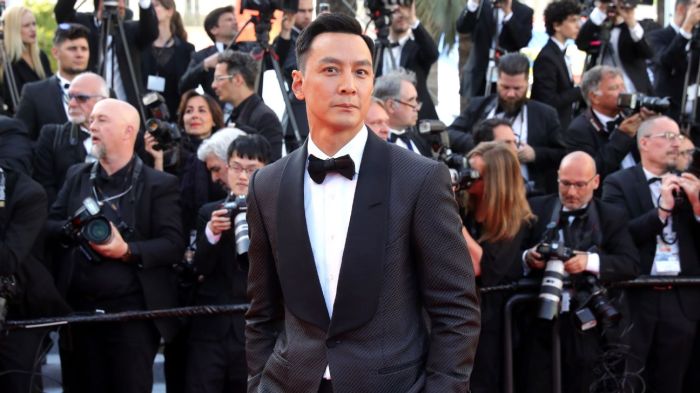 Dear Bruce Lee, I wish you were here …Read now
Dear Bruce Lee, I wish you were here …Read now
After reading Lee’s autobiography, I was amazed to learn that he had a profound respect for Ali. Lee absorbed Ali’s specialized footwork and his flicking jab, which Lee changed to a flicking back fist strike, into his fighting repertoire. Although Lee was a Wing Chun expert, he employed techniques he culled from other fighting styles to create his own style called Jeet Kune Do.
“Bruce Lee spent his entire life practicing and promoting Chinese martial arts,” Hamby said. “He has been an inspiration to me as well as many in the martial arts world. Although he suffered an untimely death, his name and his legacy will be remembered in the annals of martial arts history.”
Such was Lee’s influence that Blaxploitation producers cast former world middleweight karate champ Jim Kelly in their films to capitalize on Black interest in the martial arts. Five-time world karate champion Ron Van Clief followed soon afterward. The summer Lee died, Cleopatra Jones thrilled Black filmgoers, featuring Tamara Dobson as a no-nonsense, high-kicking heroine. The day my older teenage cousin and I saw that movie, we walked into the Mickey Finn sporting goods store in downtown Boston, and a passerby said, “Bruce Lee died!” I was 13, my cousin barely 16.
In disbelief, we asked how he died. No answer was forthcoming about a man so young, so popular and so powerful. It was a crushing blow as it came several months after the sudden death of famed right fielder Roberto Clemente in a plane crash, about whom there were two paperback biographies in Mickey Finn. A year after Lee died, Carl Douglas released a tune in 1974 that soared atop the soul and pop charts, asserting that everybody was Kung Fu Fighting.
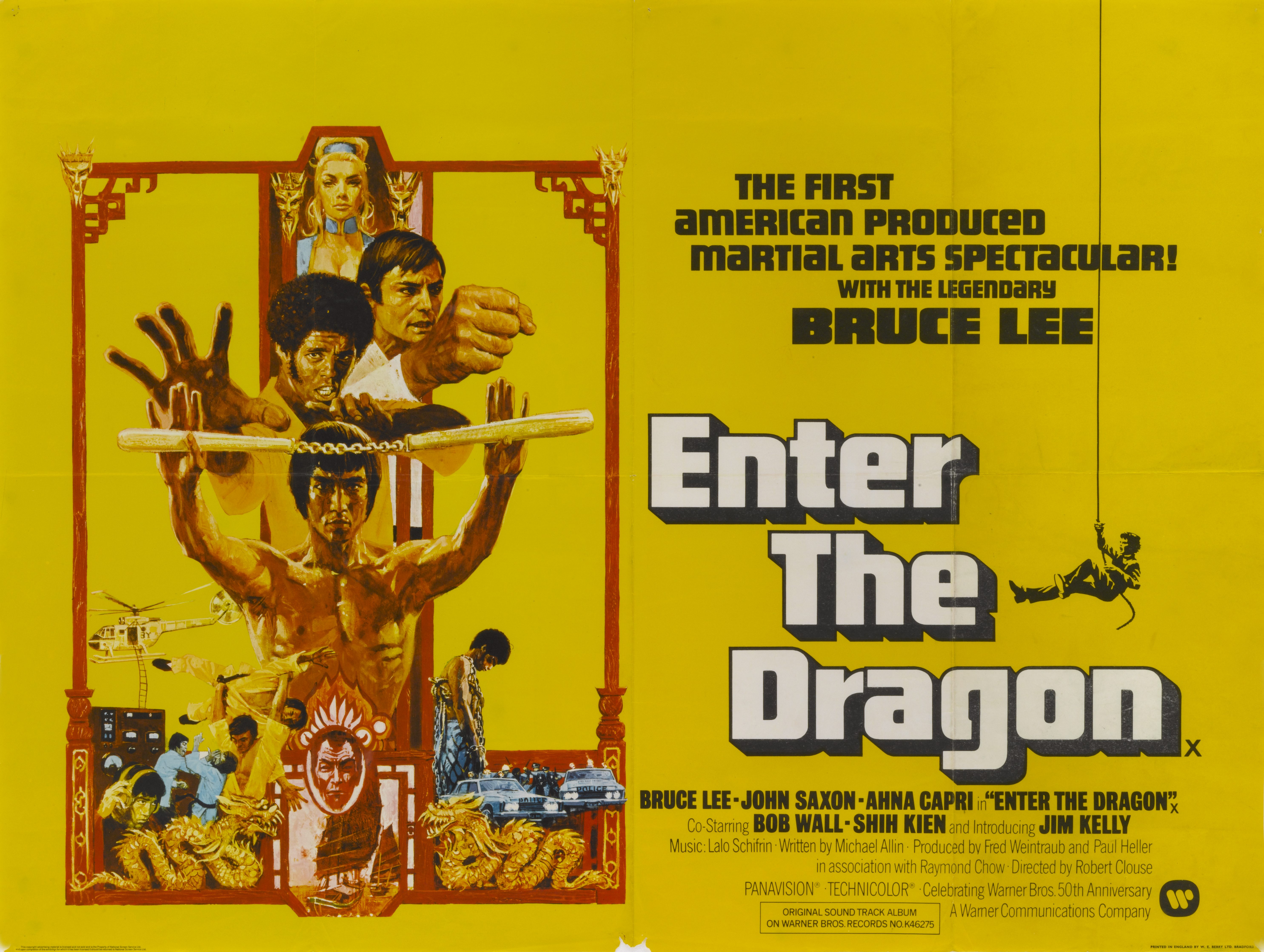 Poster for the movie Enter the Dragon, which was released in 1973.
Poster for the movie Enter the Dragon, which was released in 1973.
Movie Poster Image Art/Getty Images
Bill Rosary, who holds the title of “sifu,” or “teacher,” is a tai chi master, in Fontana, California. He was trained by the president of the Southern California Tai Chi Chuan Association, who named him as his successor. Rosary coordinated the tai chi division of Disneyland’s Martial Arts Festival.
Rosary told Andscape, “The first time I learned of Bruce Lee was when my young brother Keith and I saw him on the television doing kung fu moves as Kato on The Green Hornet. I immediately identified with his speed, power and balance. It looked explosive. Like that of lightning in a bottle. The sounds he would make got me all excited. Prior to Bruce Lee, I witnessed mostly boxing and karate that bored me. I looked forward to watching him show movement never seen to the naked eye, in my early years.
“All of a sudden everyone in our family would huddle around the boob tube and watch Ed Sullivan Show, Bonanza, and Green Hornet. My brother was beside himself and wanted to be in possession of anything related to Bruce Lee. So, I would see Keith’s intense passion for this new art called kung fu. It was the movie Enter the Dragon that took me over the top. Keith had a lot of books, magazines articles, and pictures. That’s when I would notice how Bruce Lee impacted the great martial artists like Moses Powell, Dennis Brown, Tayari Casel, Thomas LaPuppet on the East Coast. On the West Coast, I noticed brothers like Don Hamby, Kenneth Edwards, Steve Sanders, Troy Augborne, Derrick Wright, Ron Hall, just to name a few masters that I have relationship with through time here in California.”
Former Denver Broncos and Nuggets announcer Gregory Rasheed now lives in Bangkok, but is still a Denver radio host for the Root & Roots Radio Show on KUHS radio. Rasheed studied taekwondo as a young man at the Jhoon Rhee Institute of Self Defense in Washington, and taekwondo and Japanese shodokan karate for a term at Ohio State.
“I actually became interested in martial arts from westerns in the late ’50s and early ’60s. It seemed like every Western [The Rifleman, Wanted: Dead Or Alive] would have a story about Asian family coming into town,” Rasheed said. “The men would always have pigtails. The town bullies would make fun of them and sometimes cut off their pigtails. The Asian would proceed to use martial arts to beat them up. Usually all they did was use karate chops and judo throws. That type of fighting was different to me and I remember sometimes play fighting with friends where I would use karate chops. I also looked at pro wrestling and all the Asians used karate chops when wrestling.”
“But Bruce was the spark,” Rasheed told Andscape. “I remember seeing the first episode of The Green Hornet and being hypnotized by Bruce’s style. Not only his fighting but the way he walked and talked. The show came on Friday night. That weekend and the next week in school, everyone was talking about Kato. The Green Hornet became must-see TV on Fridays. The day Bruce Lee died, I saw Enter the Dragon at the Town Theatre in D.C. That place was packed.”
Related Story
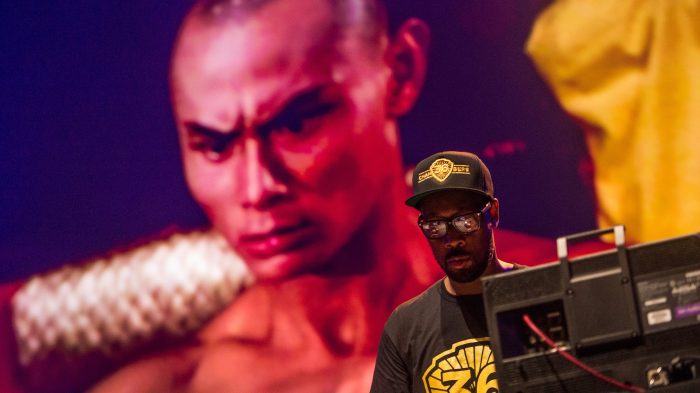 Wu-Tang’s RZA on the influence of Bruce LeeRead now
Wu-Tang’s RZA on the influence of Bruce LeeRead now
Carl Totton is the Martial Science University’s clinical psychologist. Totton has trained in the martial arts since 1963, and taught at the Taoist Institute in North Hollywood, California, since 1981. He is also co-editor of Kenpo Continuum, Volume Two. Totten told Andscape, “Bruce brought a seismic change to kung fu; he disturbed the sound of silence.
“Before him, kung fu tried to fight from their forms, or katas. After him, we stood up and fought like boxers.”
Senior grand master Keith Rosary, Bill Rosary’s younger brother, is a martial arts school owner, actor and director. At 15, he was featured on the TV show That’s Incredible, as the youngest martial arts dojo (studio) owner in the world. A 10th-degree black belt, he has appeared in movies with actors such as Jim Brown, and TV series such as Family Matters. He runs International Martial Arts Academy in Hyannis, Massachusetts, and was director of security at The Hollywood Palace when he was 17. Rosary also worked in security for entertainers such as Prince, Michael Jackson, Eddie Murphy and Janet Jackson.
His inspiration was Bruce Lee.
“Bruce was by far the hardest worker when it came to fitness, and tuning his body,” Keith Rosary told Andscape. “His movement was extremely electrifying, and he spent a lot of time figuring out fighting concepts that many martial artists use today. I’ll never forget the moment he kicked Robin on The Green Hornet.
“He has inspired every martial artist in some form or fashion. Bruce Lee is the single reason that I got started in the martial arts, and why I’m have continued for 53 years.”
Troy Augborne, 61, studied under leading Black masters such as Dennis Brown, Thomas LaPuppet and Moses Powell. “Bruce Lee was the blueprint,” he told Andscape, “He was a phenom. He didn’t even realize the impact he was having on mainstream America, or the Black community in particular. He patterned his footwork after Ali. That shows the affection and admiration he had for Black pugilists, and for Ali in particular.”
Augborne recalls brothers from “Lynwood, Watts, Compton and Inglewood, in the early to mid-1970s, riding buses” to the South Bay Theatre and the State Theatre in downtown LA, to watch martial arts movies from 10 a.m. to 11 p.m. “We’d open the place and we’d close it,” he said. “We’d get home by 1 a.m., and we’d be in trouble.”
Some 3,000 miles away, Black teens did the same thing all Saturday night in downtown Washington.
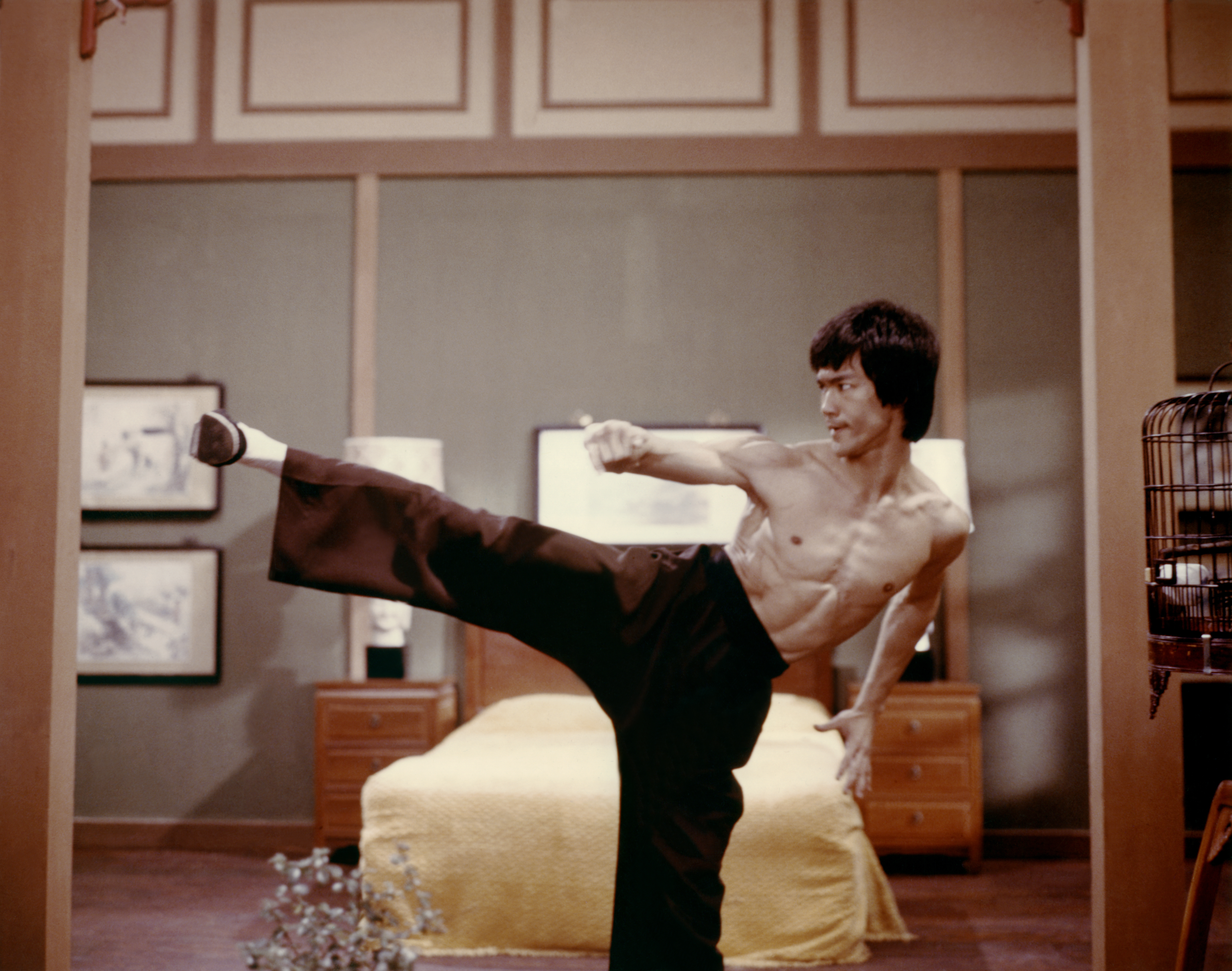 Actor Bruce Lee on the set of Enter the Dragon.
Actor Bruce Lee on the set of Enter the Dragon.
Warner Bros. Pictures/Sunset Boulevard/Corbis via Getty Images
Youths are highly impressionable, and mass media generally fills that bill. During a period when Black children and teens sought symbols of masculinity and self-defense, we couldn’t identify with the stars of The Man From U.N.C.L.E., Sean Connery’s portrayal of James Bond 007, or agent Jim West of The Wild Wild West TV show in the 1960s. As much as we enjoyed watching them all, and showing off their images on our school lunchboxes, they were white. They were also in law enforcement, a mixed bag in our community.
Kato wasn’t white, and he was the sidekick of a renegade whom police did not trust. On TV, he stood out physically and metaphorically. Our quest for outlets of virility, was evidenced by the numbers of us who purchased defiant-looking poster images of Nation of Islam minister Malcolm X and Black Panther founder Huey P. Newton, or joined the Nation of Islam or the Black Panther Party in major cities. The latter group even dressed in all black, just like Kato.
Lee never met Ali despite their long-distance mutual admiration. Washington martial arts school franchise owner Rhee, who had taught Lee the high kicks that became Kato’s trademark on The Green Hornet, tried to connect his friends. Rhee is credited with popularizing taekwondo in the U.S. He knew the world’s most famous two fighters would really vibe if they met.
Some fans wondered who would win if they fought. Lee told Enter the Dragon director Robert Clouse, “Everybody says I must fight Ali some day … I’m studying every move he makes. I’m getting to know how he thinks and moves … Look at my hand … That’s a little Chinese hand. He’d kill me.”
In the summer of 1973, Rhee spoke with Lee about meeting Ali, who was training for a rematch with Ken Norton. The movie star agreed it was a great idea, and asked Rhee to set it up with Ali. On July 20, Lee, who had been suffering from severe headaches, and had collapsed on the set of Enter the Dragon in May as a result of cerebral edema (swelling of the brain), died of an allergic reaction to the headache medication Equagesic. He was 32. Enter the Dragon, which was produced for $850,000, grossed $400 million in theaters worldwide, one of the most profitable movies of all time.
In death, the legend of the man who admired Ali and befriended Alcindor grew in Black America as it had during his life.
Bijan C. Bayne, a frequent contributor to Andscape, is the author of Martha’s Vineyard Basketball: How A Resort League Defied Notions Of Race & Class.
